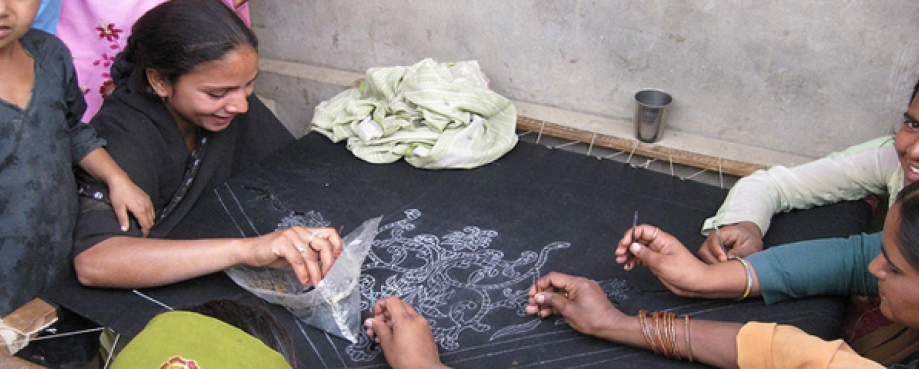
Child labour is a red button issue for most companies, as it is for their customers, and as a result is, thankfully, rarely to be found in factories. The same is not true for informal production which can be taking place in small workshops and homes. But what should a company do if it finds children working in this context? They cannot ban children from the home, so what is a sustainable solution?
ETI's new Base Code Guidance: Child labour - practical guidance for brands and retailers.
Since 2012 Traidcraft has been working with partners in India on an action-research project to develop a sustainable and scalable solution to the presence of child labour amongst homeworkers servicing craft supply-chains in the national capital region of New Delhi and parts of Uttar Pradesh where child labour amongst homeworkers is common.
Their team on the ground has been testing and refining approaches to tackling and preventing the issue. This work was complemented in 2014 when Homeworkers Worldwide were commissioned to research the strategies other companies and organisations have used, and how effective these have been. We interviewed key practitioners from major retail chains, including ETI member companies, Fair Trade companies, development NGOs and unions. The findings were fascinating and in many cases encouraging – real progress is being made on this complex issue. The findings were shared at various forums including ETI, where a request was made by companies for more practical guidance. In response HWW and Traidcraft have put together a ‘Practical Toolkit for Businesses’.
The Toolkit outlines seven practical steps businesses can take to prevent and deal with the risk of child labour amongst homeworkers servicing their craft supply-chains. These are supported by model policies and practical and tested tools available to download from the HWW website. The toolkit also discusses some of the complex issues that surround child labour to which there are no ready-made solutions and explores five underlying principles which will help businesses navigate these, providing guidance from the experience of other organisations and questions to prompt discussion.
At the Toolkit’s heart is the recognition that children are compelled to work when their parents’ income is insufficient and/or unpredictable, and when local opportunities for education are inadequate. Our research on the ground and with major brands and fair trade organisations demonstrates that simple and low-cost adjustments to sourcing and buying practices can make a substantial difference to homeworkers’ earnings. At the same time engagement with relevant local organisations ensures that remediation is effective in the local context and keeps the child’s best interests at heart. The seven steps presented in the toolkit are illustrated with quotations from businesses themselves illustrating how these initiatives have really worked for them.
One of the strongest messages from our research with companies and NGOs is the advantage of working collaboratively. Our Toolkit itself was conceived in this spirit, stemming from a direct request from businesses for further practical guidance and our desire to bring together learning from businesses and organisations that have made real progress on this issue. There’s no doubt that preventing child labour amongst homeworkers is complex; we do not claim that our Toolkit provides a complete solution. However, we are confident that it can provide businesses with a firm foundation from which to tackle this issue in their supply-chains, and hope it will provide a starting-point for future constructive collaborations. By working together, we feel certain that our efforts as businesses and NGOs will be more effective and make a meaningful difference to the lives of children in homeworker households.
Whether it happens in a factory or in a home, Child labour is unacceptable and we all have a responsibility to address and prevent it. We hope that this Toolkit helps us meet this responsibility more effectively. Please let us know what you think of the Toolkit, if and how it has been helpful to your organisation and how it can be improved.
